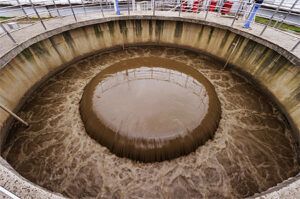WHAT IS THE DIFFERENCE BETWEEN STP AND ETP?
In this article, we’ll look What is the difference between STP and ETP?
Certainly! Let’s break down the differences between STP (Sewage Treatment Plant) and ETP (Effluent Treatment Plant) in simpler terms.
To preserve the receiving waterways, two particular treatments, sewage treatment and effluent treatment are used to remove toxins from wastewater (sludge). Both of these treatments are made up of physical, chemical, and biological processes. The primary distinction between the two STP & ETP.
WHAT IS THE DIFFERENCE BETWEEN STP AND ETP?
Sewage Treatment Plant (STP):
What it does: STP handles the treatment of the wastewater that is generated by residences, businesses, and other common locations (such as restrooms, sinks, etc.). Sewage is the term for this unsafe water.
Goal: The main duty of an STP is to treat this sewage so that it can be safely discharged into bodies of water like rivers and oceans or even utilized (for example, to water plants).
How it works: It works by separating solid waste from liquid waste, utilizing beneficial bacteria to break down trash, and adding chemicals to the water. STP Industries Inc. develops products to minimize the amount of toxic substances in sewage.
Effluent Treatment Plant (ETP):
What it does: Industrial wastewater, usually referred to as effluent, is the smelly water that is produced by factories and other industrial facilities.
Goal: An ETP, short for “environmental technology product,” is a chemical substance created to clean up industrial effluent so that it may be reused or released back into the environment in a manner that does not threaten the ecosystem.
How it works: The Etp wastewater solutions can be used to clean industrial wastewater. Sometimes these solutions might involve using chemicals, separating various materials, and occasionally using microbes to degrade dangerous materials.
To put it simply, STP cleans the environment by handling the regular, unclean water from households and businesses. ETP, on the other hand, controls the unsavoury water that emanates from industrial facilities, ensuring its safety before releasing or reusing it. With the aid of specialized techniques, each plant is created to manage a particular kind of contaminated water.
What is the use of ETP sludge?
The uses of ETP sludge are many and varied:
The primary use of ETP sludge is as a raw material for the production of fertilizer. This process is called anaerobic digestion, or AD.

Other uses of ETP sludge:
- The disposal of treated sewage sludge, which is combined with air and oxygen and applied to agricultural soil as a soil conditioner.
- Sewage sludge is disposed of through burning, which involves burning it alongside other waste products like paper and plastic to create steam and energy for industrial uses or to create heat for home usage.
- Typically, sewage sludge from sewage treatment plants is burned in a facility along with other waste products like paper and plastic. This burning process generates heat, which is then used to create steam that can be used both to heat domestic water in houses and for industrial applications.
- The primary issue with using ETP sludge is that it includes a lot of ammonia (NH3), which is extremely harmful to people if consumed in large amounts over an extended period of time.
WHERE DOES SLUDGE GENERATE IN ETP?

So what you think, Where does sludge generate in ETP?
In an Effluent Treatment Plant (ETP), sludge is formed during the process of treating industrial wastewater. This sludge is essentially the solid waste that settles or is removed during the treatment of the wastewater. It contains the solid particles and pollutants that are separated from the water during the treatment process. The sludge includes things like particles of dirt, chemicals, and other materials that were in the wastewater.
To explain further, when the dirty industrial wastewater goes through the treatment steps, certain solid substances and pollutants settle down or are separated from the water. This separation forms a thick, muddy material, which we call sludge. Managing and disposing of this sludge properly is an important part of the overall wastewater treatment process to ensure that the environment is not negatively impacted.




Comments
Post a Comment